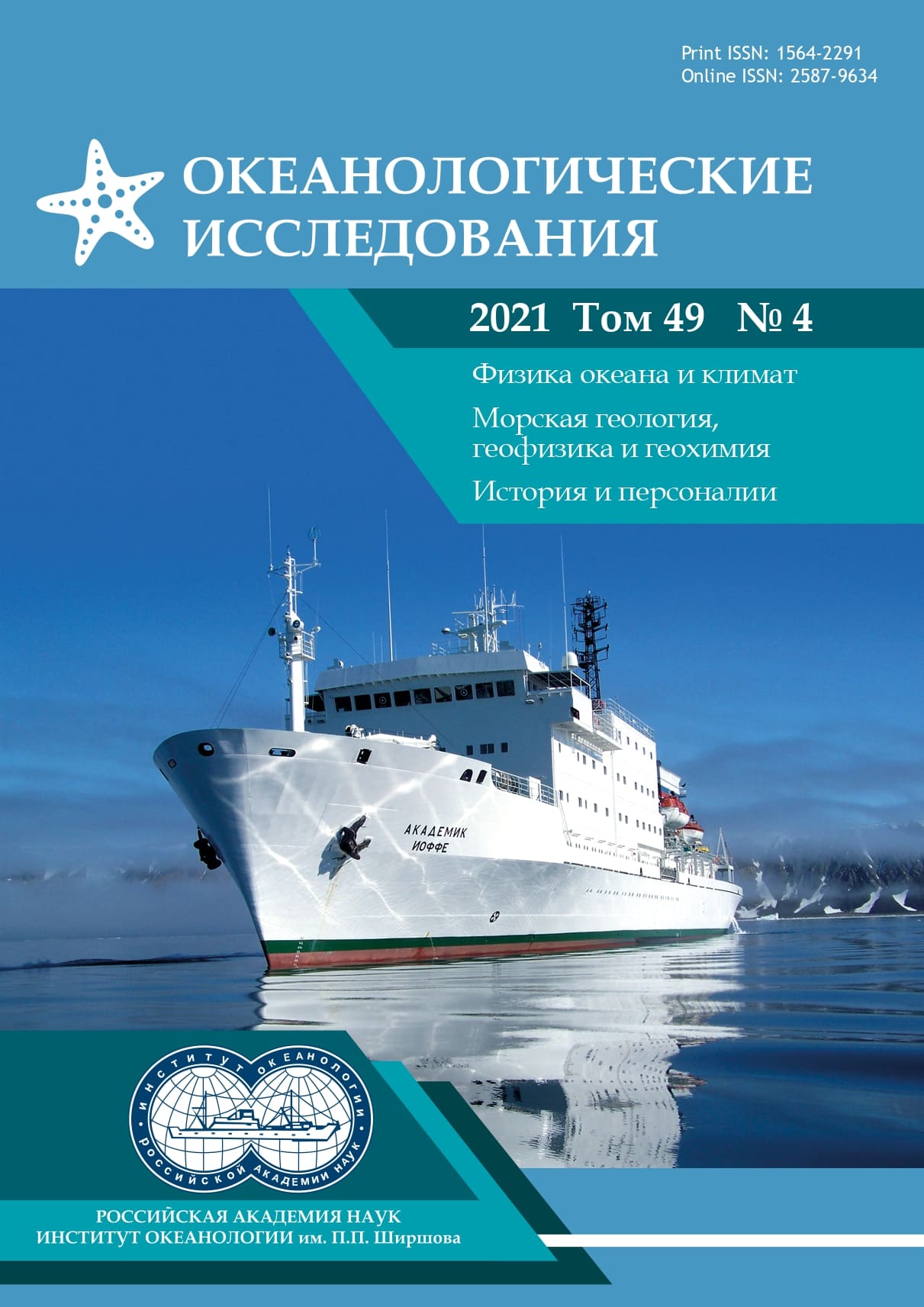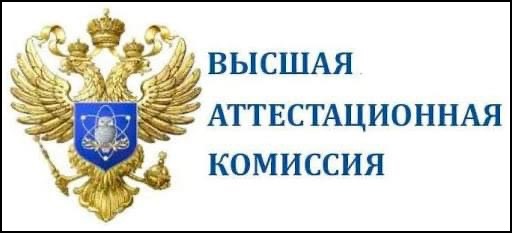СРАВНЕНИЕ ДВУХ МЕТОДОВ АССИМИЛЯЦИИ ДАННЫХ, ИСПОЛЬЗУЕМЫХ ДЛЯ УЧЕТА ОТКРЫТЫХ ГРАНИЦ ПРИ МОДЕЛИРОВАНИИ ГИДРОТЕРМОДИНАМИКИ В МОРСКИХ АКВАТОРИЯХ
Аннотация
Задачи моделирования гидротермодинамики отдельных морских акваторий и прибрежных территорий являются актуальными, поскольку результаты данного моделирования часто используются во многих приложениях. Одним из методов, позволяющих учесть открытые границы и приблизить результаты моделирования к реальным данным, является вариационная ассимиляция данных наблюдений. В настоящей работе рассматривается следующий подход: функции потоков через открытую границу считаются дополнительными неизвестными задачи; предполагается, что в заданный момент времени имеются данные наблюдений за функциями состояния акватории (температурой, соленостью, уровнем моря, скоростями). Задача рассматривается как обратная, в которой необходимо отыскать дополнительные неизвестные, такие, что выполненные уравнения модели и функции состояния акватории в некотором смысле максимально близки к данным наблюдений. Проведено сравнение методов восстановления неизвестных функций в граничных условиях на открытой границе по данным наблюдений за уровнем и скоростью в ряде численных экспериментов для области простой формы.
Литература
- Агошков В.И. Методы оптимального управления и сопряженных уравнений в задачах математической физики. М.: ИВМ РАН, 2016. 244 с.
- Агошков В.И. Методы решения обратных задач и задач вариационной ассимиляции данных наблюдений в проблемах крупномасштабной динамики океанов и морей. М.: ИВМ РАН, 2016. 192 с.
- Агошков В.И., Залесный В.Б., Шелопут Т.О. Вариационная ассимиляция данных в задачах моделирования гидрофизических полей в открытых акваториях // Известия Российской академии наук. Физика атмосферы и океана. 2020. Т. 56. № 3. С. 293–308.
- Агошков В.И., Лёзина Н.Р., Шелопут Т.О. Восстановление граничных функций на внешних и внутренних жидких границах в задаче гидродинамики открытой акватории // Журнал вычислительной математики и математической физики. 2020. Т. 60. № 11. С. 1915–1932.
- Васильев Ф.П. Методы решения экстремальных задач. М.: Наука, 1981. 552 с.
- Дементьева Е.В., Карепова Е.Д., Шайдуров В.В. Восстановление граничной функции по данным наблюдений для задачи распространения поверхностных волн в акватории с открытой границей // Сибирский журнал индустриальной математики. 2013. Т. 16. № 1. С. 10–20.
- Залесный В.Б., Гусев А.В., Агошков В.И. Моделирование циркуляции Черного моря с высоким разрешением прибрежной зоны // Изв. РАН. Физика атмосферы и океана. 2016. Т. 52. № 3. С. 316–333.
- Лебедев С.А. Методика обработки данных спутниковой альтиметрии для акваторий Белого, Баренцева и Карского морей // Современные проблемы дистанционного зондирования Земли из космоса. 2016. Т. 13. № 6. С. 203–223.
- Мысленков С.А. Использование спутниковой альтиметрии для расчета переноса вод в Северной Атлантике // Труды Гидрометцентра России. 2011. № 345. С. 119–125.
- Шелопут Т.О. Исследование и решение обратных задач в проблемах моделирования гидрофизических полей в акваториях с жидкими границами: Дисс. ... канд. физ.-мат. наук: 05.13.18. М., 2021. 128 с.
- Шелопут Т. О. Численное решение задачи вариационной ассимиляции данных об уровне на жидкой (открытой) границе в модели гидротермодинамики Балтийского моря // Современные проблемы дистанционного зондирования Земли из космоса. 2018. Т. 15. №. 7. С. 15–23.
- Agoshkov V.I. Inverse problems of the mathematical theory of tides: boundary-function problem // Russ. J. Numer. Anal. Math. Model. 2005. Vol. 20. No. 1. P. 1–18. https://doi.org/10.1515/1569398053270813.
- Agoshkov V.I. Statement and study of some inverse problems in modelling of hydrophysical fields for water areas with ‘liquid’ boundaries // Russ. J. Numer. Anal. Math. Model. 2017. Vol. 32. No. 2. P. 73–90. https://doi.org/10.1515/rnam-2017-0007.
- Agoshkov V.I., Sheloput T.O. The study and numerical solution of some inverse problems in simulation of hydrophysical fields in water areas with ‘liquid’ boundaries // Russ. J. Numer. Anal. Math. Model. 2017. Vol. 32. No. 3. P. 147–164. https://doi.org/10.1515/rnam-2017-0013.
- Edwards C.A., Moore A.M., Hoteit I., Cornuelle B.D. Regional ocean data assimilation // Annual review of marine science. 2015. Vol. 7. No. 1. P. 21–42. https://doi.org/10.1146/annurev-marine-010814-015821.
- Ngodock H., Carrier M., Souopgui I., Smith S., Martin P., Muscarella P., Jacobs G. On the direct assimilation of along‐track sea‐surface height observations into a free‐surface ocean model using a weak constraints four‐dimensional variational (4D-Var) method // Quarterly Journal of the Royal Meteorological Society. 2016. Vol. 142. No. 695. P. 1160–1170. https://doi.org/10.1002/qj.2721.
- Zalesny V.B., Diansky N.A., Fomin V.V., Moshonkin S.N., Demyshev S.G. Numerical model of the circulation of the Black Sea and the Sea of Azov // Russian Journal of Numerical Analysis and Mathematical Modelling. 2012. Vol. 27. No. 1. P. 95–112. https://doi.org/10.1515/rnam-2012-0006.
- Zalesny V.B., Gusev A.V., Ivchenko V.O., Tamsalu R., Aps R. Numerical model of the Baltic Sea circulation // Russ. J. Numer. Anal. Math. Model. 2013. Vol. 28. No. 1. P. 85–100. https://doi.org/10.1515/rnam-2013-0006.
Передача авторских прав происходит на основании лицензионного договора между Автором и Федеральным государственным бюджетным учреждением науки Институт океанологии им. П.П. Ширшова Российской академии наук (ИО РАН)












